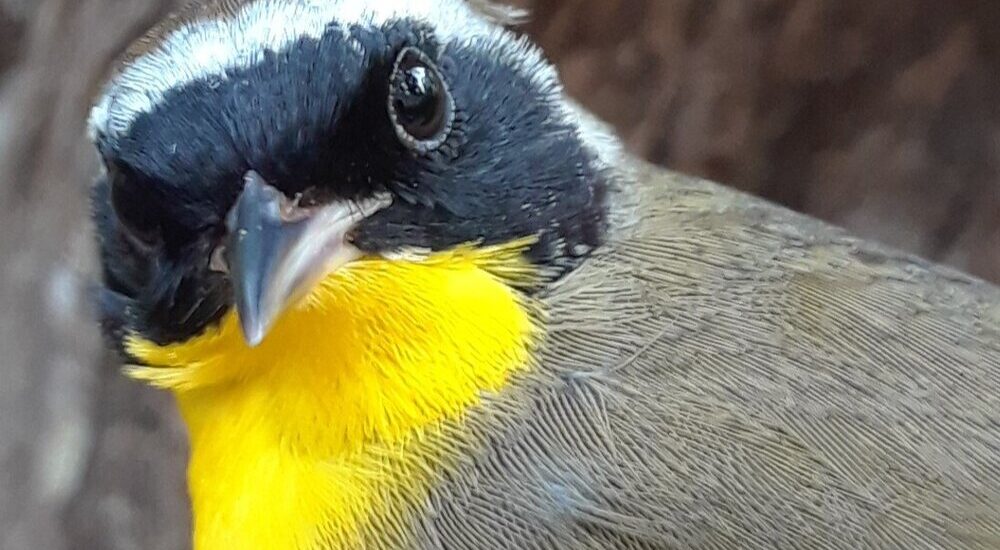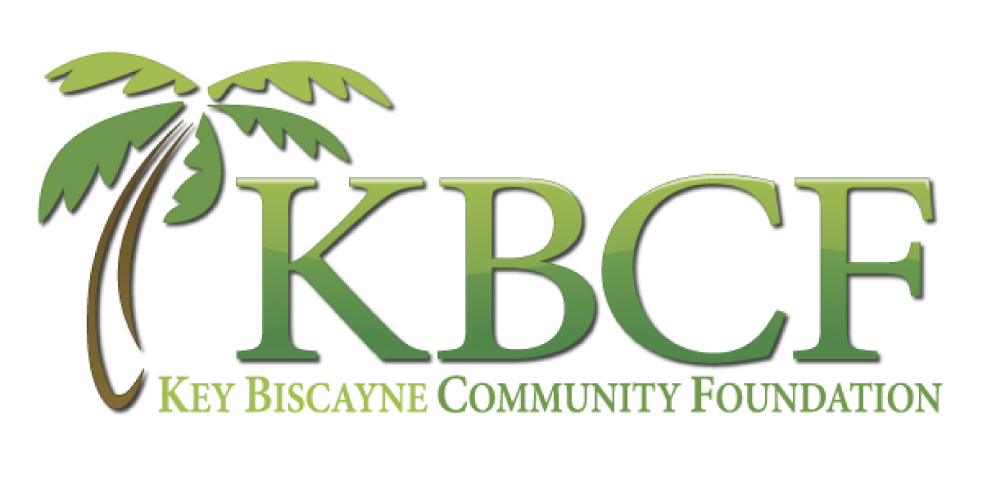
- October 17, 2022
- Posted by: Key Biscayne Community Foundation
- Category: Community Blog
Cape Florida Banding Station – 20 Years of Citizen Science on Key Biscayne
Key Biscayne’s southern tip, Bill Baggs Cape Florida State Park (BBCFSP), is a case study of successful reforestation techniques after quite turbulent beginnings. Thirty years ago, Hurricane Andrew’s 165 mph winds thrashed the park’s non-native tree canopy. Lone Australian Pine trunks, scattered and leafless, now stood in what once was a thick pine forest. This was undoubtedly a devastating loss for the island’s ecology. However, state park officials also saw this as a once-in-a-lifetime opportunity to restore the park to its native flora. A redesigned state park added slopes made of pine remains and replanted five distinct but complementary habitats, resembling an ancient Key Biscayne landscape that the Tequesta people likely inhabited.
 When Michelle Davis visited Cape Florida in 2000, she recalled viewing a thriving forest ripe for a migratory bird banding station. She had just spent a decade banding birds along the Gulf states and felt that this, one of the most southerly barrier islands in the U.S., now with lush landscapes teeming with birds, would be a unique spot for banding songbirds as they prepare for their final destination. Dogged in her pursuit, Michelle received the necessary federal and state permits to create a migratory bird banding station on Key Biscayne.
When Michelle Davis visited Cape Florida in 2000, she recalled viewing a thriving forest ripe for a migratory bird banding station. She had just spent a decade banding birds along the Gulf states and felt that this, one of the most southerly barrier islands in the U.S., now with lush landscapes teeming with birds, would be a unique spot for banding songbirds as they prepare for their final destination. Dogged in her pursuit, Michelle received the necessary federal and state permits to create a migratory bird banding station on Key Biscayne.
On October 5, 2002, she finally launched her first netting expedition in hopes of capturing small songbirds darting through the trees on their way south or west to their winter homes. Twenty-three light, barely visible nets line the underbrush of the buttonwoods, strangler figs, and gumbo limbo trees, where unsuspecting birds are trapped. Volunteers painstakingly remove them from the net, attaching uniquely-numbered aluminum bands to one of their legs. They then record their weight and fat to gauge if the state park has enough sustenance to nourish the birds before their long journey across the ocean. Other data collected include age, species, and sex for more detailed records of the types of birds using the area in migration.
Valuable information recorded during the banding process allows banders and other researchers to identify individual birds when they are recaptured, end their flights, or are no longer alive. This data is crucial for understanding the life expectancies of different species depending on all of their recorded physical features, as well as their migration routes and time spent in transition.
they are recaptured, end their flights, or are no longer alive. This data is crucial for understanding the life expectancies of different species depending on all of their recorded physical features, as well as their migration routes and time spent in transition.
The CFBS has recorded over 41,000 birds from 119 species, primarily neotropical migrants from Red-eyed Vireos to Yellow-billed Cuckoos to rare species like the Ruddy Quail-Dove. The banding station averages 1,400 birds a year, catching around 1,747 birds in the fall and approximately 1,110 birds every spring. This mid-September has been one of their busiest to date, banding their 1000th bird this season on September 25th.
CFBS experts have concluded that the years of work to rebuild the park’s destroyed vegetation have paid off. By providing various endemic habitats, ranging from coastal grasslands to beach dunes and not just the wiped-out Australian pines, migrant and resident bird species and other local wildlife have increased in numbers inside the park.
This month marks 20 years of citizen science for the Cape Florida Banding Station (CFBS), along with its faithful director of 20 years, Michelle Davis. To commemorate this milestone, the Key Biscayne Community Foundation has pledged $10,000 to the CFBS on behalf of the Life Enhancement Forum, a fund Marius Robinson created to promote health, wellness, and longevity. For those that knew longtime Key Biscayne resident Marius Robinson, he was a lifelong bird lover with a deep knowledge of Key Biscayne’s bird life. Marius’ eldest daughter, Lori Robinson, says, “It would be difficult for anyone to be with my father for any length without absorbing some of his infectious lifelong passion and enthusiasm for birds.”
Michelle Davis, CFBS Director, took a moment and answered some questions for us:
You started the banding station back in 2002. Why did you feel there was a need for a banding station in South Florida, and how did you decide on Bill Baggs?
Most banding stations are along the northern Gulf Coast or in the Northeast to the mid-Atlantic. I saw many migrating songbirds on a visit in the 1990s, so when I moved here in 2000, I started setting up a banding station. I thought about Matheson Hammock until I met Robin Diaz, a Key Biscayne resident at the time and extraordinary birder, and Elizabeth (Liz) Golden, the BBCFSP biologist. Liz contributed significantly to the restoration of native vegetation following Hurricane Andrew. The geographic location of Key Biscayne as a barrier island offshore of Miami makes it essential for migrating birds, and BBCFSP’s location as a well-vegetated oasis on the tip of KB makes it an excellent site for a banding station. Also, we could document the value of the restored habitat to migratory birds.
What does celebrating your 20th anniversary banding on Bill Baggs mean to you?
Honestly, I am surprised we made it this far, but it is exciting to have collected a 20-year dataset of complete fall migration seasons. Our success has been due to Robin, Liz, Miriam, and hundreds of other volunteers over the years that have been committed to the station and the dataset. Our relatively new (since 2020) partnership with the Tropical Audubon Society will allow us to expand our ability to collect data at a high level for the years to come and to facilitate outreach to researchers that can utilize this rare dataset.
Your songbird studies and experiences have taken you around the Gulf of Mexico, then prompted you to create the Cape Florida Banding Station on Key Biscayne. Given your expertise, what do you feel is our region’s primary threat to songbirds right now?
Habitat loss. Birds need green space with native vegetation to provide food and shelter at stops along the way to continue their migrations. Coastal habitat is critical, and that part of Florida bears the brunt of heavy development.
What can Key Biscayne residents do to support the banding station efforts and migratory birds in general?
The banding station can always use donations. We have a few volunteer positions, but they require a time commitment because of the extensive training needed to handle the birds safely. At home, you can do a lot by planting native trees in your yard for food and shelter, or if you are in a high-rise, turning off as many lights as possible at night during the migration season. Songbirds migrate at night, and the lights can disorient them, causing them to strike buildings. Install pedestrian and roadway light posts with downward-facing lights.
Do you have a nemesis songbird species you hope to band at the station? Are songbirds your favorite birds?
Kirtland’s Warbler, Western Spindalis, Black-Throated Gray Warbler. All these are occasional vagrants to South Florida, and I would love to band one here. Songbirds have become my favorite over the years, but I am especially drawn to seabirds, storks, cranes, and hawks. I have always liked all the birds that can travel long distances.
The CFBS is not the only one celebrating an important milestone. The Tropical Audubon Society (TAS) also recently celebrated 75 years of bird and environmental conservation advocacy in South Florida. Besides managing the CFBS, TAS also hosts birding tours on Key Biscayne a few times a year, primarily in Bill Baggs Cape Florida State Park and Crandon Park. Visit the links below to learn more about TAS and the CFBS.
Visit their calendar to learn more about the following TAS birding tours on Key Biscayne and throughout the region.
The Cape Florida Banding Station has a great blog to stay up-to-date on migrating birds visiting Key Biscayne.
You can support the Cape Florida Banding Station here.

